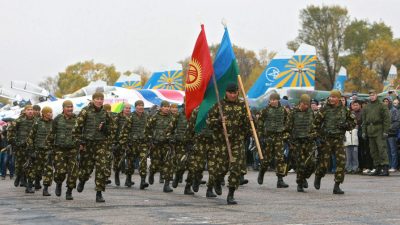Kyrgyz Color Revolution Fears – Imagined or Imminent?

Kyrgyzstan’s state security service arrested Kanatbek Isayev, a supporter of opposition candidate Omurbek Babanov, just weeks before the presidential election on 15 October on the grounds that he was coordinating with criminal groups in planning Color Revolution riots and essentially working to carry out a coup against the government. This doesn’t mean that the opposition itself wants to do this, but just that it could be a rogue individual doing so on their own initiative, or at the “useful idiot” behest of a foreign intelligence agency such as the CIA. It’s important to treat this incident very delicately because of how sensitive the situation is in the Central Asian country. Kyrgyzstan has already experienced two violent Color Revolutions, the last of which was in 2010 and descended into inter-ethnic violence between the native Kyrgyz and minority Uzbeks in the diverse Fergana Valley of the country’s south.
During that time, rioting did indeed lead to a coup, and the security vacuum that was created as a result provided the opportunity for people to “settle old scores”, so to speak, and start a massive killing wave in and near the country’s second-largest city of Osh. It was only by a stroke of luck and the stern self-discipline on all sides – especially the Uzbek government – that a larger war was averted and a so-called “Central Asian Spring” didn’t precede the Arab one which began less than half a year later in what curiously appears in hindsight to have a been an organized destabilization attempt all across what the Bush Administration had at one time referred to as the “Greater Middle East”.
The consequences of widespread disorder in this pivotal region between Russia, China, Iran, and Afghanistan would be a deterioration of their collective security as a result of the possible outflow of millions of what Ivy League researcher Kelly M. Greenhill considers “Weapons of Mass Migration”, the spread of Daesh and other terrorist groups into this region and disguised among potential refugees, a possible Russian-led CSTO peacekeeping operation, and of course the end of China’s Silk Road dreams for the region. All of these disturbing yet very realistic scenarios explain why Alexei Fenenko, a lead researcher at the International Security Problems Institute at the Russian Academy of Sciences, told TASS last week that the US might try to destabilize Central Asia in the near future in order to take revenge against Russia for its success in Syria.
All of this becomes more relevantly pressing when considering that it was announced earlier this week that Russia is exploring options for a second base in Kyrgyzstan, this time in the southern Fergana Valley where the 2010 killings occurred. On the one hand, forthcoming unrest could offset these plans, but on the other, they give Moscow an even more important reason to get more directly involved in balancing the region’s complex interethnic affairs and safeguarding its and its nearby Great Powers’ collective security. As of now, there’s no reason to expect more Color Revolution chaos in Kyrgyzstan, especially seeing as how the security services are evidently doing their job by detaining suspected organizers of this plot, but nevertheless, the Central Asian country will always remain a powder keg of potential conflict by virtue of its tumultuous history, geostrategic location, and diverse ethnic composition.
The post presented is the partial transcript of the CONTEXT COUNTDOWN radio program on Sputnik News, aired on Friday Oct 6, 2017:
Andrew Korybko is an American Moscow-based political analyst specializing in the relationship between the US strategy in Afro-Eurasia, China’s One Belt One global vision of New Silk Road connectivity, and Hybrid Warfare.
Featured image is from the author.

